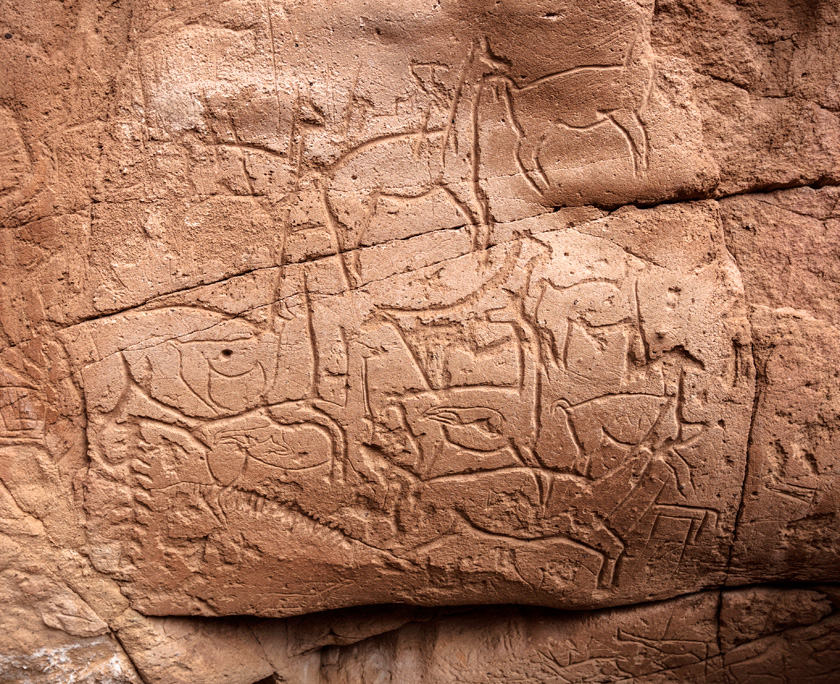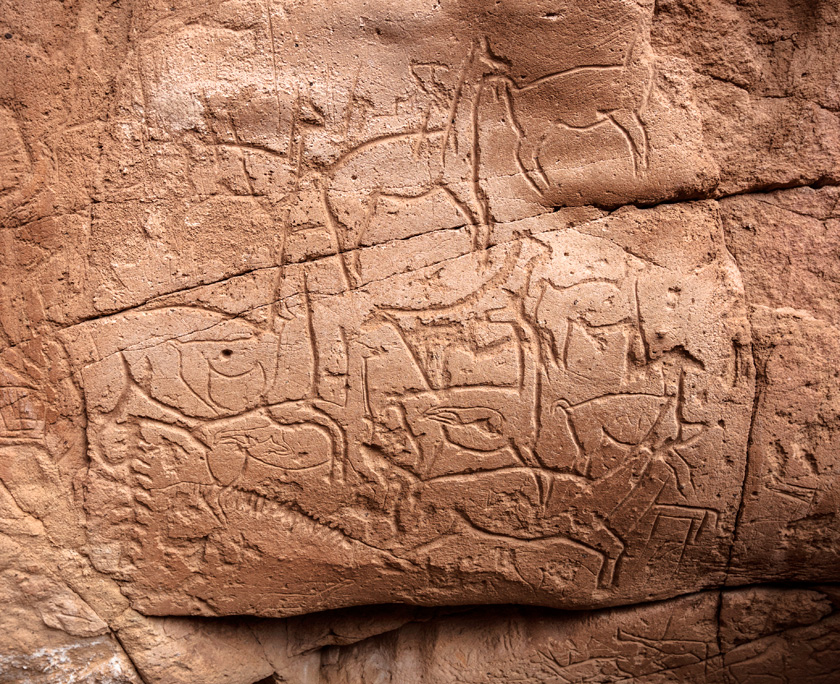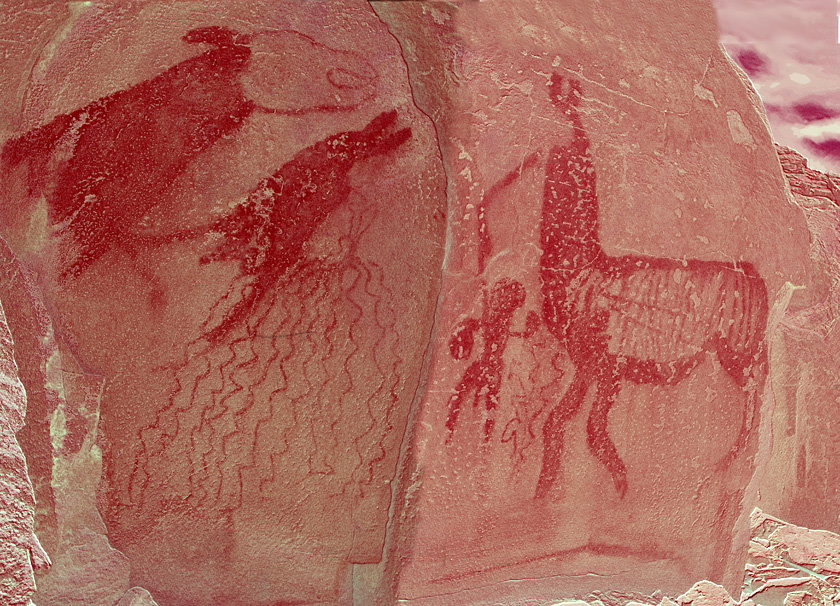In the Andes, stone is one of the most effective mediums for communicating with the deities, and people “prefigure” or anticipate their wishes on them. To paint, engrave, or shape rocks is to “give life” to them. In ancient times, to draw llamas was to create llamas.
In the Kalina style, female camelids are shown with fetuses in their wombs or their heads are turned backwards, emulating the typical posture of these animals when giving birth.
In the Taira style, llamas are shown pregnant or nursing offspring. The vulvas and phalluses that appear with the llamas emphasize the concept of reproduction as a generator of abundant herds.
In the Milla style, the male llama is shown mounting the female while a human figure leads another llama for mating. The yarn falls like rain, announcing that the pairing will bring new animals and abundant textile fiber.









































